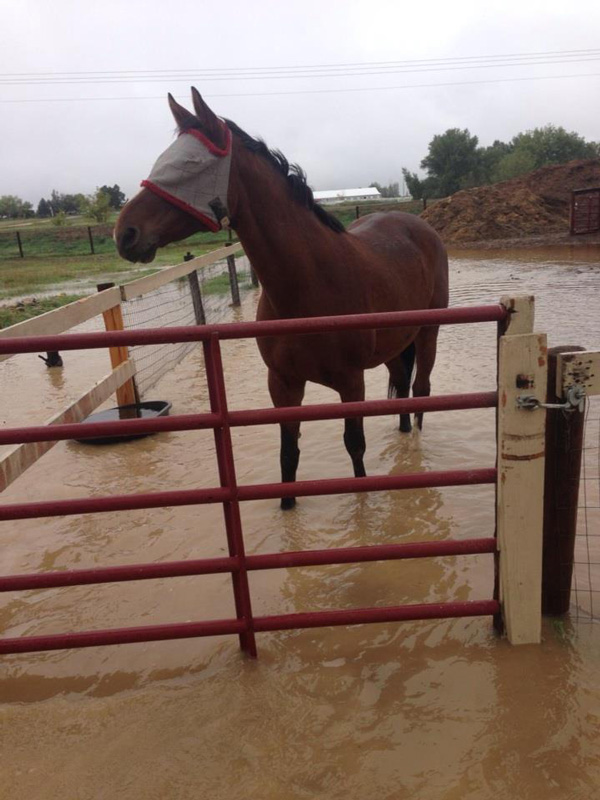
The rain on Sept. 11 felt like a typical late summer shower in Colorado. The difference was that it didn’t stop. It rained for five days, causing widespread flooding. Many of the most heartbreaking stories from the floods involved people struggling to save their horses, dogs, and cats. Some people had to hope that their pets would find safety, as flooding made travel impossible.
What we learned from the events in Colorado is that a flood can happen almost anywhere. Even if you do not appear to be in the path of a flood, water can change course during a storm. Low-lying areas may fill with water, and small streams can swell to dangerous levels.
What can you do to keep your horses safe? Follow these tips.
1. Find out whether your property is in a flood zone. You can begin by searching the map feature at FEMA.gov. Contact FEMA if you have questions. Your town or county planning department is also a good source of information, as it determines what can be built within the jurisdiction.
Very little can be built in the “flood way,” which is the active conveyance of a stream during a flood. However, accessory structures, including barns, may be allowed in 100-year flood zones, and they may not be required to be set above the “base flood elevation.” In other words, your horses may be housed in a building that will flood in a major storm. This situation is dangerous, so avoid building in flood zones when possible. This will also save you the hassle and expense of purchasing flood insurance.
2. Design your property to allow each horse to get to safe, high ground. This is critical because you may not be there in the event of a flood. Take these precautions:
·Do not construct pastures next to low lying areas that are not connected to higher ground.
·If you live in an area prone to flash floods, do not turn your horses out next to stream beds. Flash floods move too quickly for your horse to react.
·Keep your horses out of soft, boggy areas. Even if you don’t experience a dramatic flood, over-saturated ground can be dangerous for your horse if he gets trapped in the mud.
3. Think ahead for the survival of your barn during severe weather events:
·Ensure that you have positive slope on all sides of your barn, and that water flows away from the structure.
·Keep all electrical gear off the floor.
·Ground your barn to prevent damage from lightning strikes.
·Trim or remove trees that could potentially damage your roads and structures.
While designing for floods is mostly common sense, people are often taken by surprise by flood events. They often think it won’t happen to them. Take it from us here in Colorado–it is worth the time to plan ahead for the safety of all of your loved ones, human and animal!


